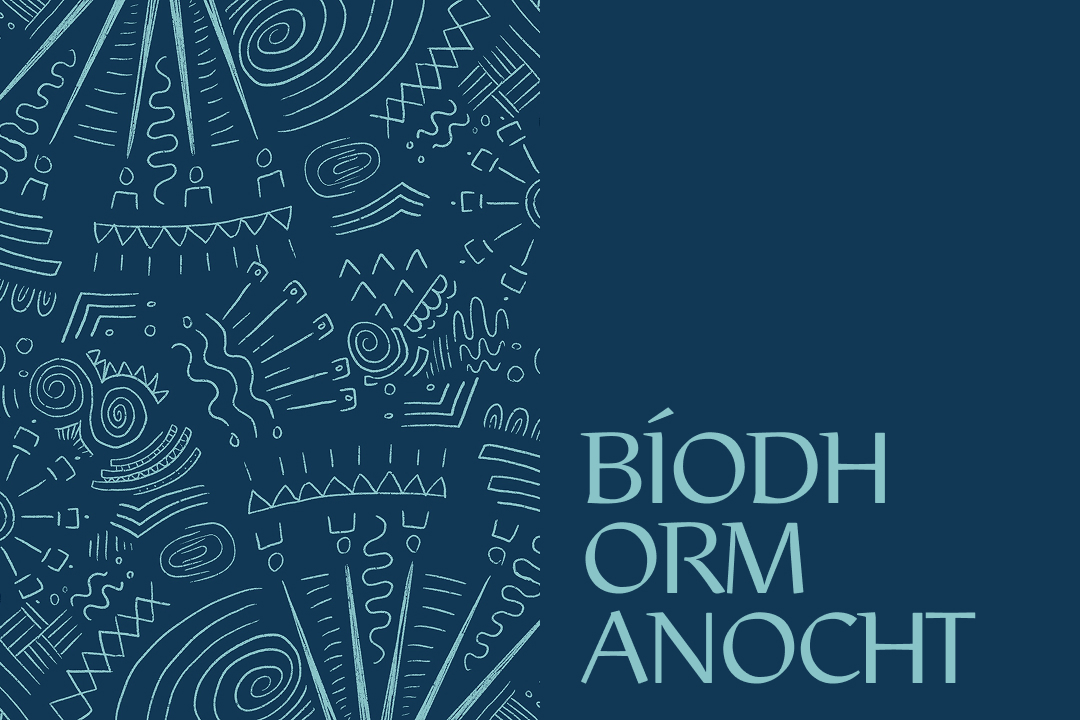Bíodh Orm Anocht

Ormston House in collaboration with EVA International presents Bíodh Orm Anocht. Featuring new and existing artworks by four artists – Seán Hannan, Laura Ní Fhlaibhín, Ciarán Ó Dochartaigh, and Kiera O’Toole – this exhibition will take place at Ormston House and several off-site locations.
Bíodh Orm Anocht, roughly translating to ‘be with me tonight’, is a group exhibition featuring new and existing artworks by four artists – Seán Hannan, Laura Ní Fhlaibhín, Ciarán Ó Dochartaigh, and Kiera O’Toole – presented at Ormston House and off-site locations. While the contributors work across media and processes, they are unified by a preoccupation with customs and practices that can broadly be described as folk knowledge. These methods and intuitive systems challenge technorational systems of thought.
These four artists convey knowledge that transcends language and which is all the more potent because it remains unwritten and unspoken. Each artist is concerned with the metaphorical qualities of materials. They draw from disciplines outside the visual arts (including mythology, zoology, and cartography), infusing them with personal meaning. Inherent in these works is the possibility that atavistic wisdom may be sourced from the natural world.
Seán Hannan’s work explores how forgotten voices and rituals can echo into the future, both through unstable technologies and systems of collaboration. Using archival fragments from autobiographical memories referring to Irish traditions, Hannan’s artworks reflect obsolescence and poetic instability. Received at the Graveyard is a sonic installation revolving around an evolving voice AI (artificial intelligence). At its core lies a handful of field recordings made in Ireland in the 1950s that captured the final traces of a near-extinct tradition, keening (caoineadh). Another work featured in this exhibition is LUCK (2022), a sculpture in the form of a piseóg (pish-ohg): folk witchcraft. Mainly a phenomenon of rural Ireland, piseógs were cast as an act of malice, often using a chicken egg onto which a curse had been placed.
In contrast, Laura Ní Fhlaibhín employs materials which have traditionally been connected with healing and nourishment. Sifting stories and traces associated with site, memory, and the casting of spells, Ní Fhlaibhín creates complex but delicate sculptural scenarios. She frequently introduces living beings into white cube environments that are typically purposed for the display of inanimate objects. While previous artworks have involved earthworms, leopard slugs, and willow trees, the family of sculptural assemblages presented here are made from chunks of mineral salt and ash wood. The creation of these sculptures has involved the co-authorship of horses, who have licked the salt crystals into biomorphic forms. The ash tree is sacred in Irish mythology and is seen as possessing talismanic power.
The equine kingdom is also referred to in the cosmological work of Ciarán Ó Dochartaigh. His Speculative massage tools for a family of Donkeys (2022) incorporates massage tools for these domesticated creatures. Other works by Ó Dochartaigh presented at Ormston House include a rendering in glazed ceramics of the artist’s late father’s stomach. A stacked edition of printed drawings link the ecological decline of fish species with medical modifications of the human body, Irish history, and the legacies of British colonialism.
Preparation for this project has entailed site visits and open-ended fieldwork across graveyards, the River Shannon, fish shops, and city streets. This is best exemplified in the work of Kiera O’Toole, whose practice involves derivés¹ of everyday public spaces, in this case Limerick city centre. Through drawing in-situ, O’Toole records the subtle energies of these locations (which she describes as spatialised emotions) and translates her pre-reflective, sensory encounters into topographical maps and charts that she describes as ‘affective cartographies’.
The exhibition takes its name from a traditional Irish song first transcribed by the Irish Folklore Commission in 1936.² The song is essentially a piece of mouth music or lilting in which melody and rhythm take precedence over lyrical content. Before being preserved via the written word, ‘Bíodh Orm Anocht’ was conveyed orally down through generations and was therefore altered over time. In the few recordings that are available (such as Mick Hanly and Micheál O Domhnaill’s 1974 album Celtic Folkweave³), the singer’s words hover between possibilities of lyrical meaning, pitch, and rhythm. In this way, the song is a vehicle for forms of expression that transcend time and language and which are an outcome of communal rather than individual authorship.
¹ A walk through city streets without foreplanning.
² The Dúchas Project, The Main Manuscript Collection vol. 262 (1936), 340. Available here.
³ This recording is available here.
The exhibition is supported by the Arts Council of Ireland and Limerick Arts Office. Seán Hannan’s participation in this exhibition is partly made possible by the Mondriaan Fund, the public fund for visual art and cultural heritage in the Netherlands.
Limerick City
